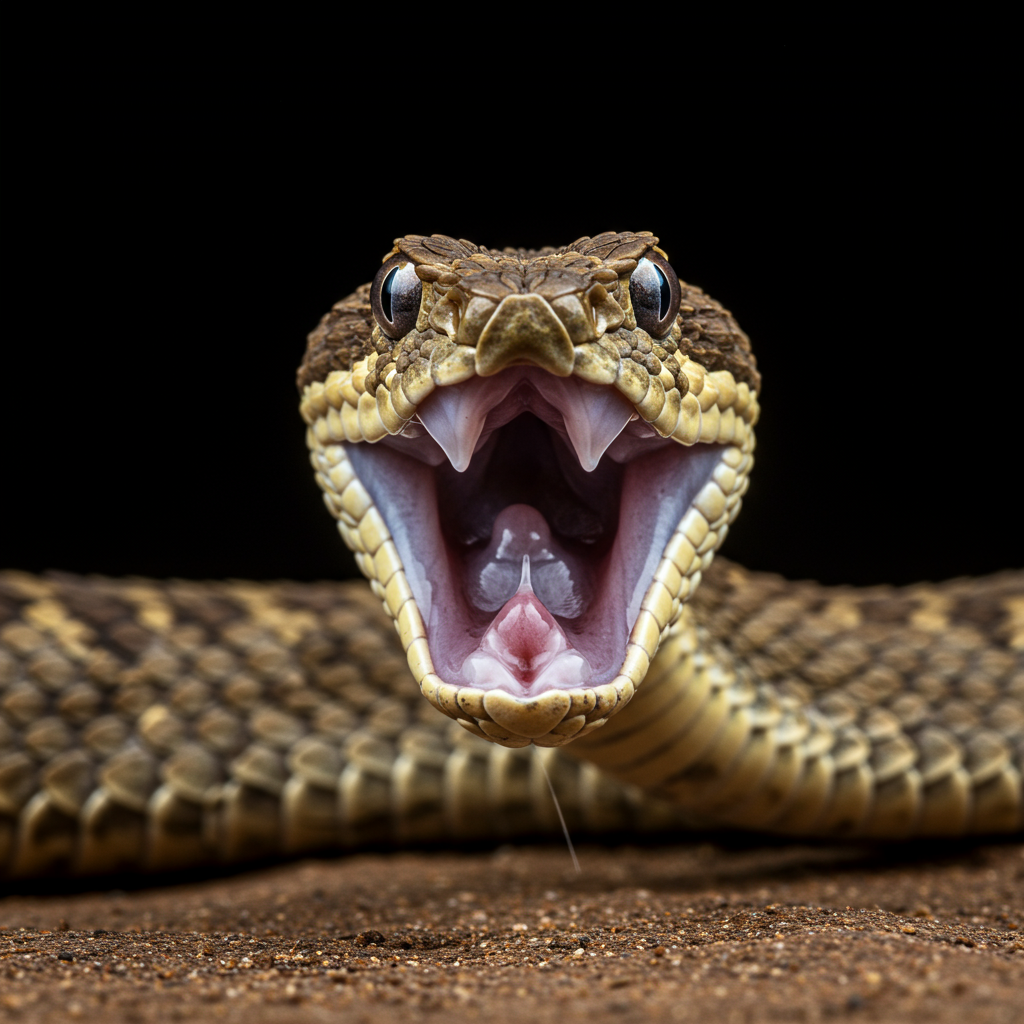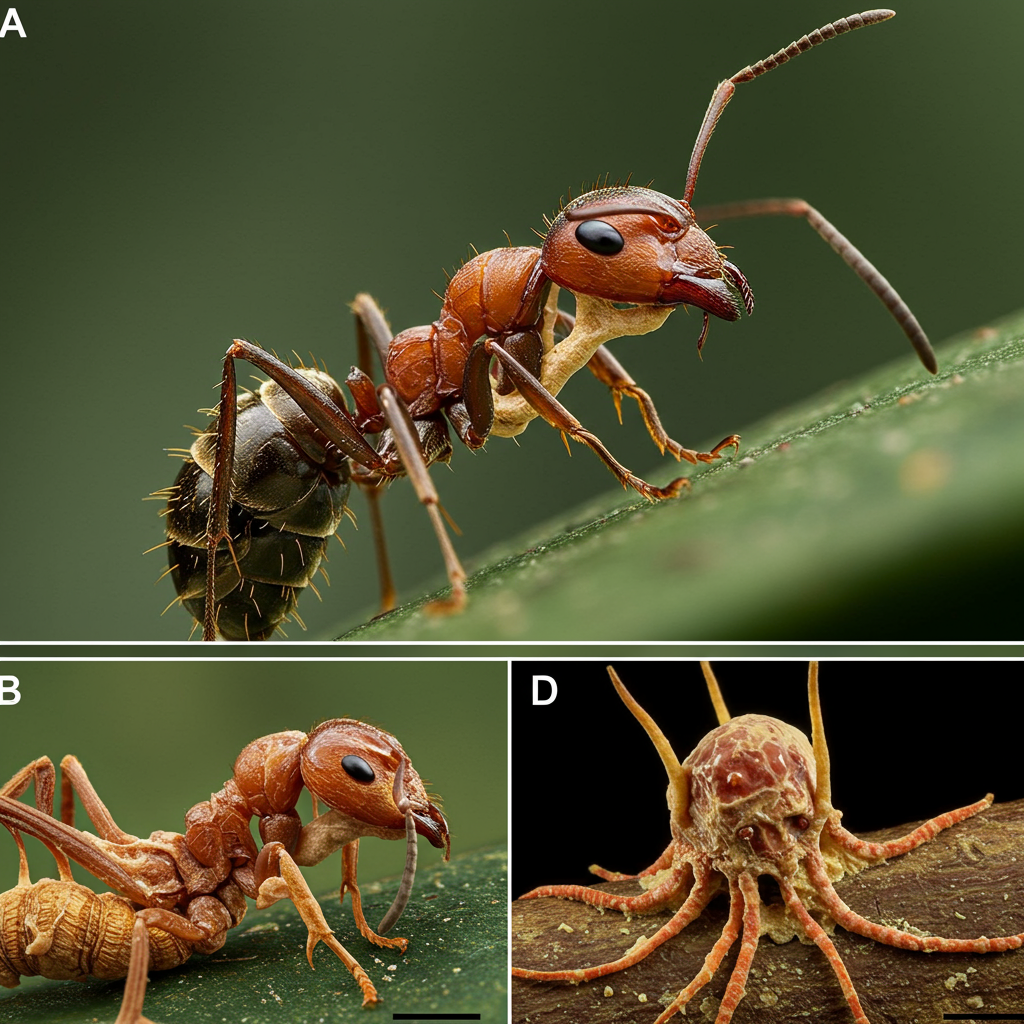Imagine a strike so rapid, it’s over before you can blink. Venomous snakes execute such lightning-fast attacks, often in a mere 60 milliseconds, a testament to their evolutionary prowess. New, groundbreaking research, captured through high-speed slow-motion footage, is now peeling back the layers of mystery surrounding these formidable predators. It reveals the distinct, often dramatic, ways different snake families deploy their fangs and deliver their lethal venom, offering invaluable insights into their hunting strategies and biology.
The Blink-and-You’ll-Miss-It World of Snake Strikes
For decades, the sheer speed of a snake’s strike made detailed observation nearly impossible. However, scientific ingenuity has changed the game. Researchers embarked on an ambitious study, meticulously filming 36 species of venomous snakes. They used ultra-high-speed cameras, recording at an astounding 1,000 frames per second, to capture every minute detail. These serpents struck a specially designed ballistic gel target, engineered to closely mimic the texture and resistance of human skin and muscle. Playing these incredible recordings back at just 3% of real-time speed unveiled a hidden world of precision, power, and distinct biting mechanics among the viper, elapid, and colubrid families. This pivotal research was published in the esteemed Journal of Experimental Biology.
Vipers: The Calculated Fang Walkers
Vipers, a family renowned for their striking ability, showcased a particularly fascinating technique. Species like the sharp-nosed pit viper (Deinagkistrodon acutus) demonstrated incredible speed, typically hitting their target within 100 milliseconds. What sets them apart is a unique maneuver described as “fang walking.” Just before impact, these snakes are able to dramatically fold out their fangs, according to Professor Alistair Evans of Monash University, a co-author of the study. Once contact is made, they subtly “walk” their fangs forward, repositioning them for optimal penetration and venom injection. This calculated, precise movement ensures maximum efficiency in delivering their potent toxins.
Elapids: Repeated Strikes for Potent Venom Delivery
Elapid snakes, a family that includes some of the world’s most venomous species, employ a different, yet equally effective, strategy. Rather than a single, lightning-fast strike, elapids tend to be more stealthy, sneaking up on their prey. Once within range, they often bite repeatedly. Professor Evans notes that elapids possess permanently erect fangs. These fangs are typically shorter than those found in vipers. The repeated biting action isn’t just about more punctures; it’s functionally vital. This action actively contracts the muscles surrounding the venom gland, ensuring a thorough and efficient injection of venom into the unfortunate prey. Iconic elapid species observed included the rough-scaled death adder (Acanthophis rugosus) from northern Australia and the Cape coral snake (Aspidelaps lubricus). While famous elapids like cobras, mambas, and Australian taipans belong to this family, their specific strike patterns were not the focus of this particular study.
Colubrids: Jaw Rotation for Enhanced Venom Penetration
The colubrid family presents yet another unique approach to venom delivery. Unlike vipers and elapids with their prominent front fangs, colubrids like the mangrove snake (Boiga dendrophila) have their fangs positioned further back in their mouths. To effectively inject venom, these snakes must open their mouths significantly wider. Once they’ve latched onto their prey, their method becomes even more distinctive. Researchers observed colubrids “sawing or rotating their jaws,” effectively cutting a gash into the target. This unique jaw movement is presumed to create deeper wounds, thereby allowing for better penetration and dispersal of the venom. The photographic evidence of these slicing wounds in the ballistic gel underscores the efficacy of this method.
A Glimpse into the Perils of the Hunt: Fang Loss and Replacement
The detailed slow-motion footage didn’t just reveal precise biting mechanics; it also captured a dramatic, never-before-filmed event. In one instance, a blunt-nosed viper (Macrovipera lebetina) misjudged its strike against a moving target. Its fang snapped off and went flying. This spectacular observation offers crucial insights into how fang loss likely occurs in the wild during feeding. Scientists had previously found detached fangs in snake scats, suggesting that fangs frequently break off inside prey and are subsequently swallowed. Capturing this process on camera for the first time was, as Professor Evans described, “quite dramatic.” Fortunately, for a snake, losing an individual fang is not a significant problem. These remarkable reptiles continuously grow and replace their fangs throughout their entire lifespan, ensuring their hunting capabilities remain intact.
Why This Research Matters: Conservation and Understanding
The insights gleaned from this detailed study extend far beyond mere scientific curiosity. Understanding the precise hunting methods and venom delivery mechanisms of different snake species holds significant implications for their conservation and protection. As Professor Evans articulated, “Only by knowing their diet and hunting methods can we be confident in that we’re going to put forward protection schemes that are going to be successful.” Dr. Alessandro Palci of Flinders University, an independent expert in snake biology, affirmed the study’s importance, stating it “fills gaps in our knowledge of snakes’ striking behaviour.” He further noted that the observed behavioral differences correlate remarkably well with existing knowledge of these snakes’ fang anatomy. The meticulous work of lead author Dr. Silke Cleuren, conducted at Venomworld, a specialized venom production institution near Paris, underscores the global collaborative effort behind such vital ecological research.
Frequently Asked Questions
How do scientists study the incredibly fast strikes of venomous snakes?
Scientists overcome the challenge of speed by using ultra-high-speed cameras, often recording at 1,000 frames per second. This allows them to slow down the footage to just 3% of real-time speed for detailed observation. They also use specialized targets, such as ballistic gel, designed to mimic the resistance and structure of real animal tissue, enabling accurate analysis of fang penetration and venom delivery. This innovative methodology was key to the research published in the Journal of Experimental Biology.
What are the main differences in biting strategies between vipers, elapids, and colubrids?
Vipers exhibit a rapid strike, often within 100 milliseconds, and uniquely “walk” their fangs forward after initial impact, folding them out just before hitting the target. Elapids, with their permanently erect fangs, tend to sneak up on prey and bite repeatedly, with each bite contracting muscles around the venom gland to enhance delivery. Colubrids, possessing rear-mounted fangs, must open their mouths wider and then “saw or rotate their jaws” to cut into the prey, ensuring deeper venom penetration.
Is fang loss a serious problem for venomous snakes in the wild?
No, fang loss is generally not a serious problem for venomous snakes. While the study dramatically captured a blunt-nosed viper losing a fang due to a misjudged strike, and fangs are sometimes found embedded in prey or swallowed, snakes have an evolutionary advantage: they continuously replace their fangs throughout their lives. This ensures that losing an individual fang during a hunt does not permanently impair their ability to capture prey or inject venom, highlighting their remarkable resilience.
Conclusion
The latest revelations from high-speed videography offer an unprecedented look into the intricate world of venomous snake strikes. From the viper’s precise “fang walk” to the elapid’s repeated venom delivery and the colubrid’s unique jaw rotation, each family demonstrates an evolved mastery of the hunt. This research not only fascinates but critically informs conservation efforts, helping us understand these magnificent, often misunderstood, creatures on a deeper level. As scientists continue to unravel the secrets of the natural world, every discovery adds a vital piece to the puzzle, contributing to the protection and appreciation of Earth’s diverse biodiversity.




